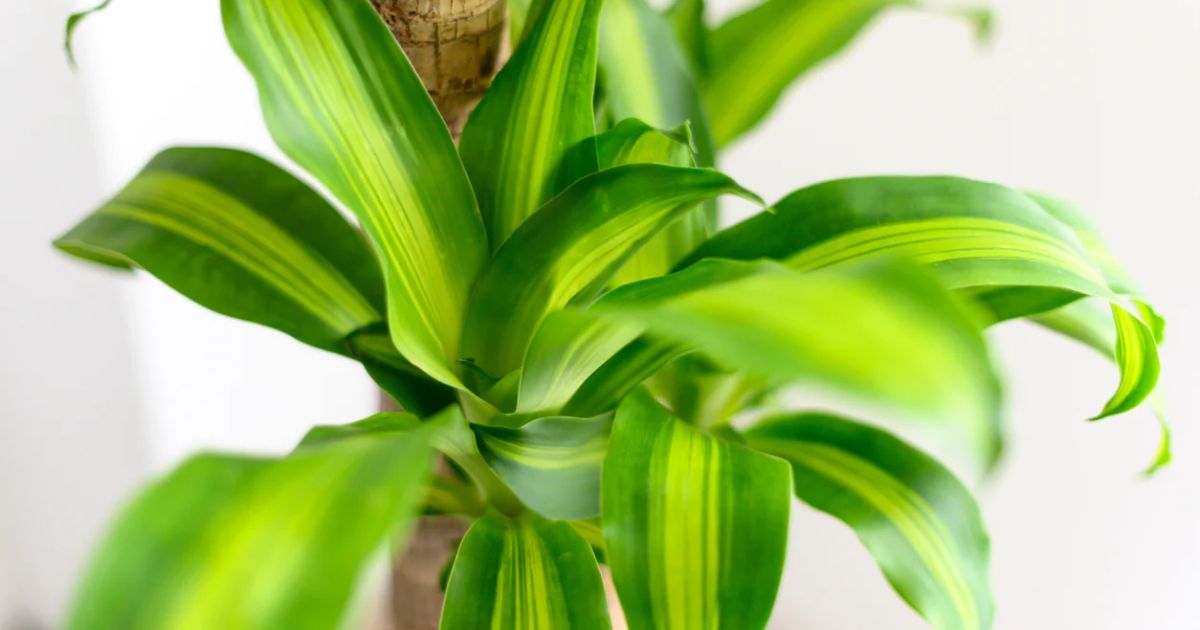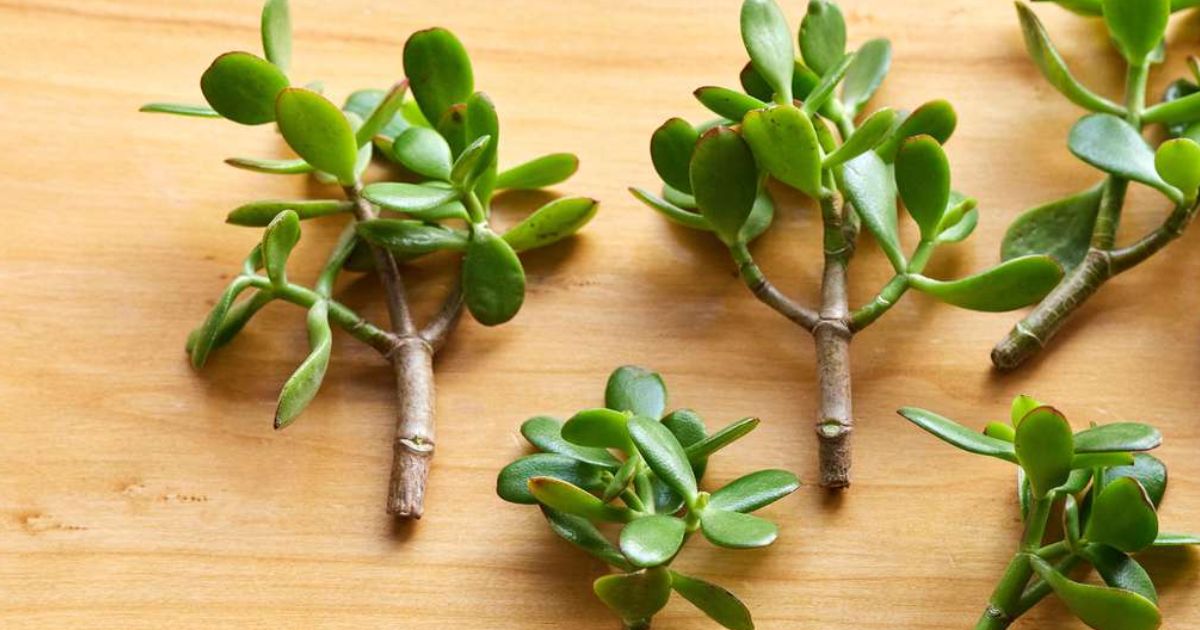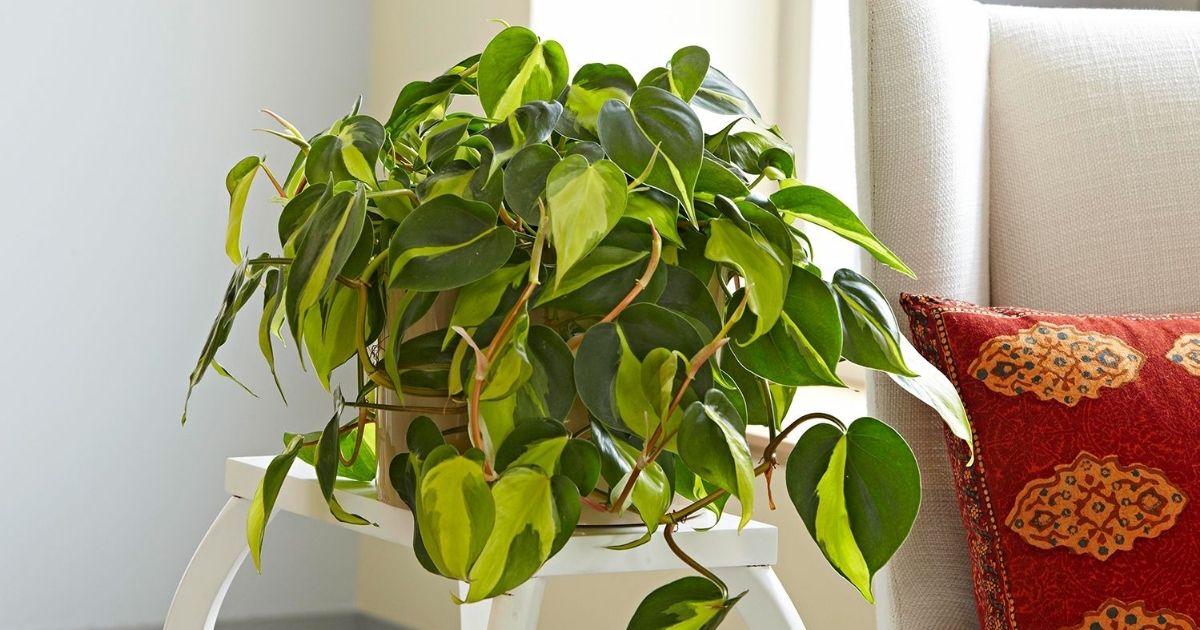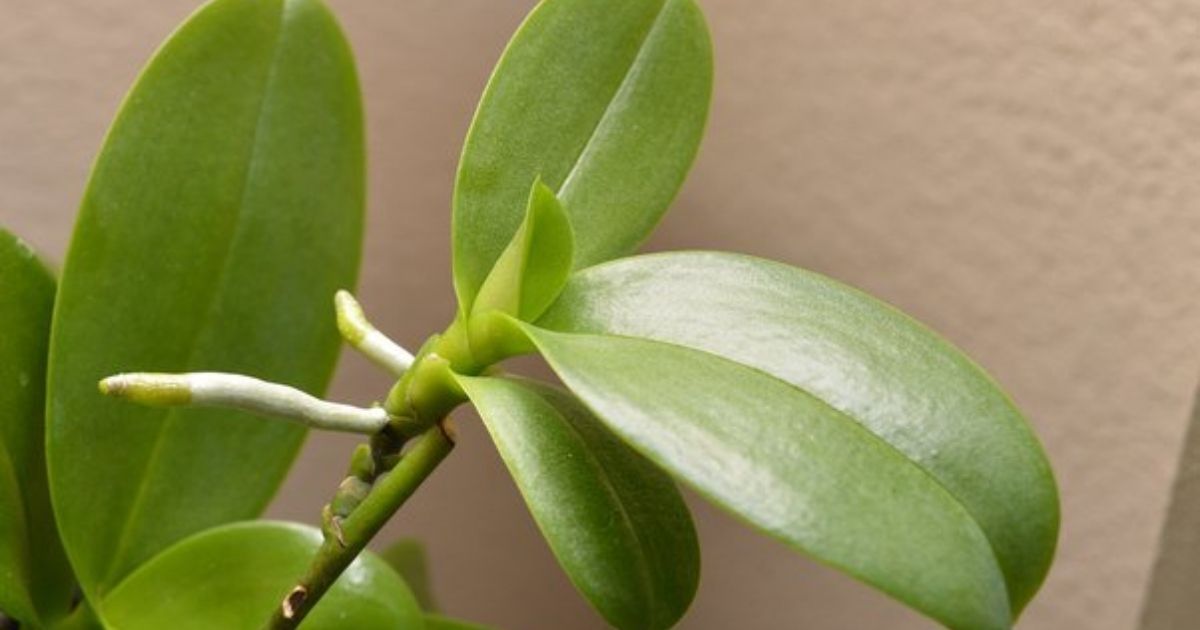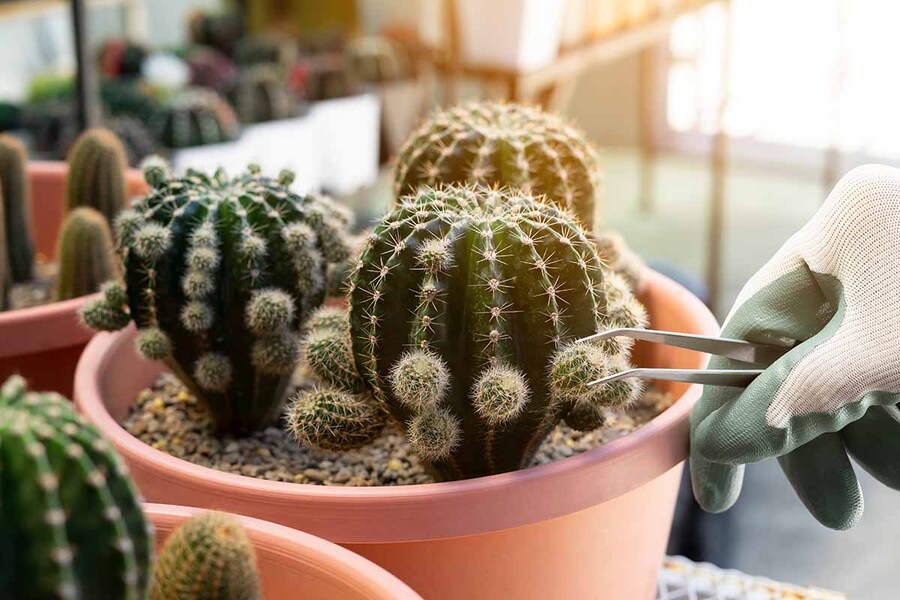9 Best Hydroponic Plants For Beginners To Grow All-Year Around
If you are new to hydroponic gardening and unsure where to start, we are here to help. This article lists the 9 best hydroponic plants suitable for beginners. So, follow us and explore this sustainable and cost-effective way to grow your product all year round.
What Is Hydroponics?
Hydroponics is a growing technique that utilises a water-based nutrient solution instead of soil. This technique involves using an aggregate substrate, such as vermiculite, coconut coir, or perlite, to support plant growth.
USDA has stated hydroponics is "growing plants in water culture or sand culture without soil, which are procedures that have been used by physiologists studying plant nutrition and other plant scientists for more than a century."
Many small farmers, hobbyists, and commercial enterprises choose hydroponic plants to use space efficiently. Besides, they also offer various advantages, such as:
- Has the capacity to grow in harsh environments where traditional in-ground agriculture is not suitable, such as desert areas or cold climates.
- Allows more control over nutrient content and growing conditions, leading to faster growth and better crop harvests.
- Avoids or reduces issues related to soil-borne pests and diseases.
- Requires less water and nutrient use and minimises the need for manual labour and crop rotation.
9 Best Hydroponic Plants For Beginners
Let's start with our list of hydroponic plants. Whether you're a beginner or an experienced gardener, these plants will flourish in your garden and offer fresh and nutritious produce.
Strawberries
Hydroponically enables quicker growth and earlier harvesting, particularly beneficial for crops like strawberries. The best thing is strawberries can be vertically stacked with hydroponics, maximising growing space and producing larger harvests without expanding the growing area.
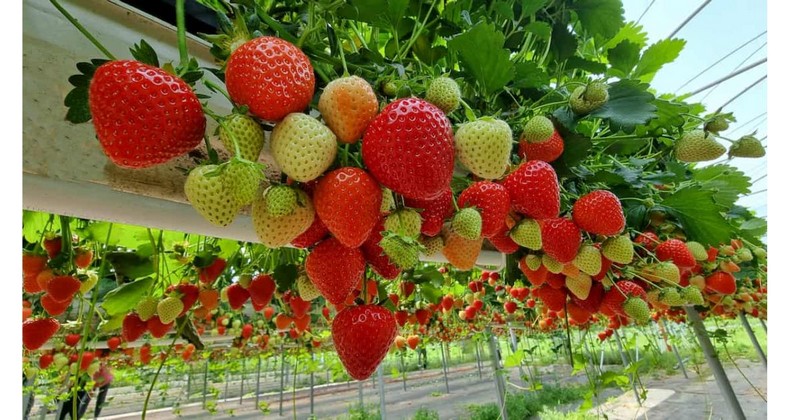
Hydroponic strawberries are big and flavorful
To start, choose ebb and flow or drip systems - the best hydroponic systems for strawberries. Then, ensure your garden has adequate lighting: Strawberries require 12-14 hours of direct light during the fruiting stage and 18 hours for vegetative growth. So, consider using supplementary grow lights like LEDs or fluorescents in our store.
Besides, maintaining optimal temperature (18-24 degrees Celcius) and pH levels (within the range of 5.8-6.2) support healthier strawberry growth. Deviating from these parameters may lead to poor nutrient absorption and plant health problems.
Tomatoes
Tomatoes are also on our list of best plants for hydroponics, especially during the winter months when lacking fresh produce. Some people believe that hydroponically grown tomatoes lack flavour. However, in most cases, this can be due to the nutrients provided during the growing process.
Focus on selecting the suitable tomato variety for your hydroponic system. Micro-sized varieties are perfect for hydroponic setups, delivering bountiful yields in a limited space.
During the daytime, growers should keep an air temperature between 18 - 24 degrees Celcius. At night, temperatures should vary from 13 to 18 degrees Celcius. Meanwhile, monitor the growing solution's temperature and ensure it is between 20 - 22 degrees Celcius. In these optimal conditions, hydroponically grown tomatoes can yield huge and flavorful fruits like this:
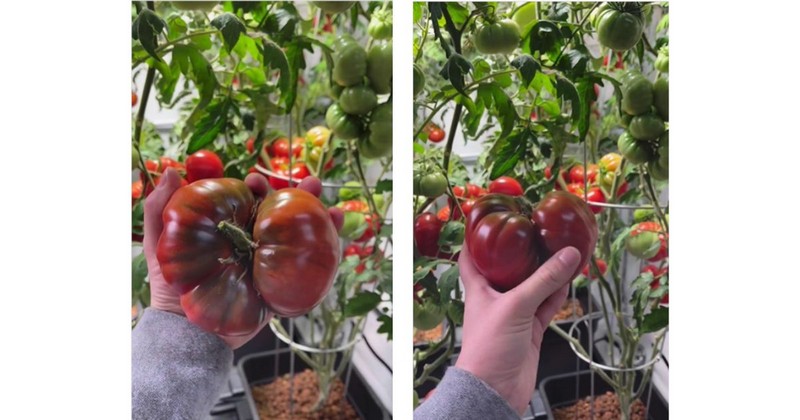
Big-size tomatoes in our gardens.
You can opt for clay pebbles to support large plants like tomatoes. This method ensures the roots firmly anchor themselves.
Finally, adding supplements like Cal-Mag can enhance the taste of hydroponic fruits like tomatoes, specifically when they taste watery.
Chilli Peppers
If you're still uncertain about "What are the best hydroponic plants to grow?", consider chilli peppers. Growing peppers hydroponically offers numerous benefits, particularly for health-conscious people.
Chilli peppers are part of the "dirty dozen," known for their high pesticide content when grown conventionally. When planting them hydroponically, you avoid these harmful chemicals while enjoying fresh and flavorful crops year-round. Moreover, this approach can lead to impressive plant growth and abundant harvests.
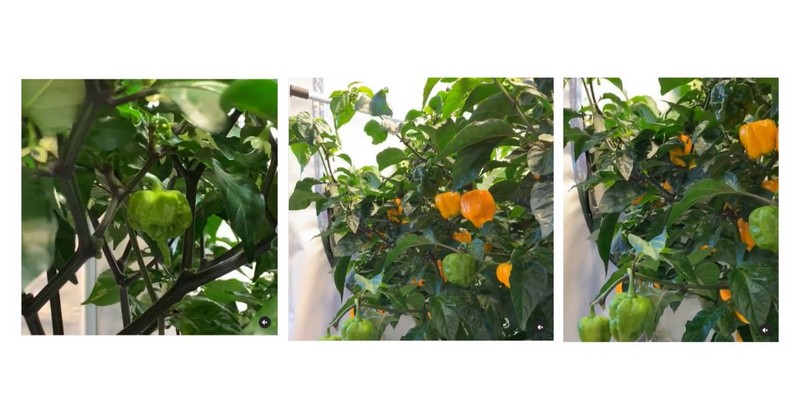
The first step is preparing the Deep Water Culture system. It will expose the plant's roots directly to the nutrient solution.
Regardless of the chosen system, regularly monitor the nutrient solution. Keep a pH level around 6 to prevent shock or oxygen depletion, with temperatures between 15°C and 25°C. Additionally, watching the concentration of the solution with an EC truncheon helps avoid nutrient burns or poor growth.
Peppers are low-maintenance, as they are self-pollinating. However, extra care, such as gently shaking the plants daily, can improve their productivity. That way, you can get a steady supply of nutritious food while also enjoying growing pesticide-free produce at home.
Lettuce
Lettuce is also among the best vegetables for hydroponics for many reasons:
- Easy to grow for beginners.
- Significantly save costs compared to buying it from the store.
- Have better quality and suffer less from pest damage.
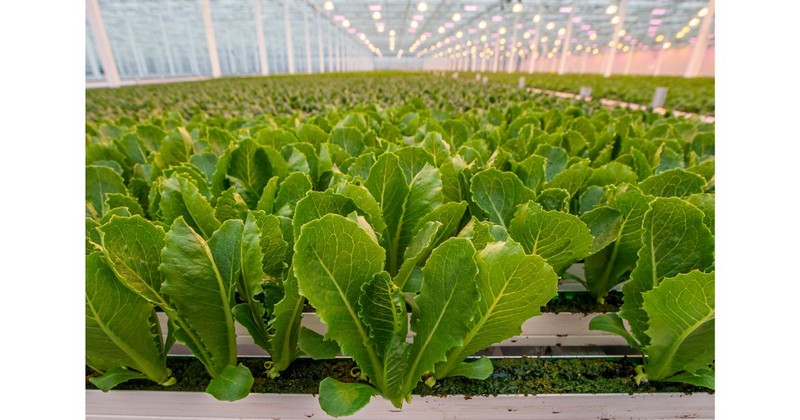
Here are some things you should notice during the growing period for the best yield and healthiest plants:
- Provide lettuce with 10 to 14 hours of moderate to low light daily, as it doesn't need extensive lighting.
- Monitor your nutrient solution frequently for evaporation indicators and make additional adjustments as needed.
- Replace the solution every two to three weeks.
- Keep the air temperature cool, ideally below 24 degrees Celcius, as lettuce thrives in cooler conditions.
Herbs
Growing herbs hydroponically allows you to enjoy the convenience of picking fresh herbs whenever you need them. We recommend starting with cuttings rather than seeds, which promotes more substantial and faster growth. You will get fresh and flavorful hydroponically grown vegetables, avoiding the need to buy herbs with unknown chemicals sprayed on them.
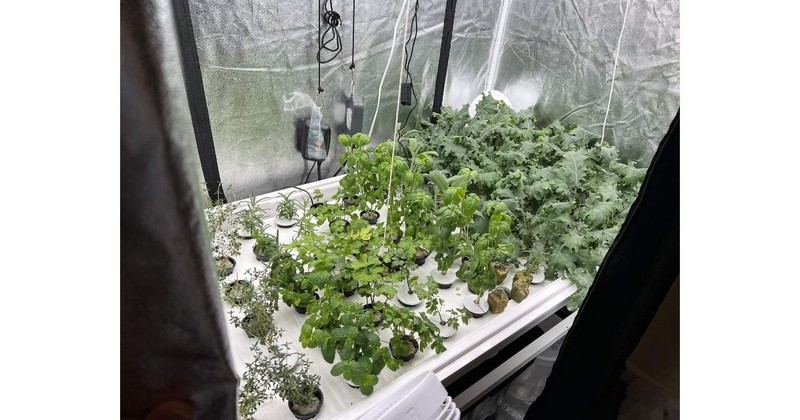
Here is the list of the best hydroponic herbs that you can add to your garden:
- Genoese basil
- Holy basil
- Thyme
- Lemongrass
- Mint
- Dill
- Sage
- Marjoram
- Rosemary
- Parsley
- Chives
- Oregano
- Chamomile
Green Onions
Green onions are undeniably one of the best hydroponic plants due to their convenience and versatility for home growers. While they may grow slightly smaller indoors compared to outdoor cultivation, they thrive with proper adjustments:
- A pH level between 6.2 to 6.8.
- Temperatures between 20-25°C
- 8-10 hours of light daily.
The recommended hydroponic systems are Media Bed, DWC, and NFT, each offering unique benefits for growing green onions.
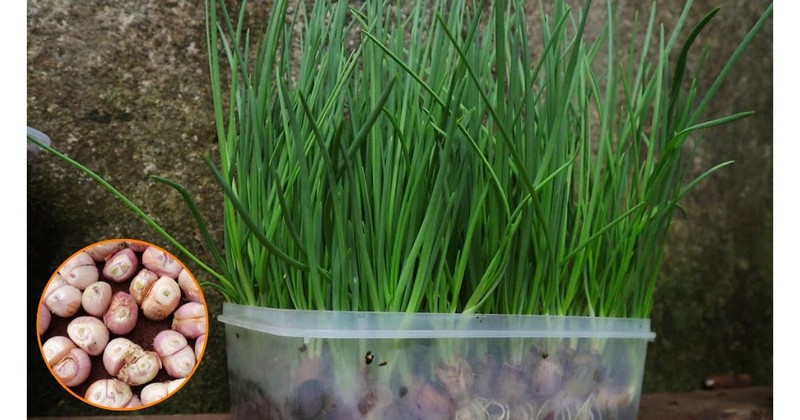
Green onions should be spaced 2 inches apart in a row. Consider using wider seed pods for efficient multi-sowing. Unlike narrower pods, which limit the number of onions per pod, wider pods can contain more seeds, increasing yield potential.
Arugula
The last on our list of ideal hydroponic vegetables is Arugula. You can prepare it in many ways without worrying about lacking nutrition. Packed with calcium, folate, and essential vitamins A, C, and K, arugula stands out as a nutrient-rich green that goes beyond mere salad options.
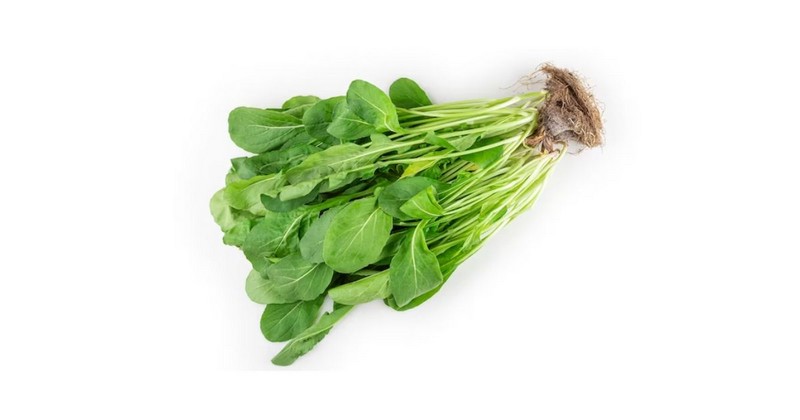
To grow arugula hydroponically, you should provide optimal growing conditions:
|
Aspect |
Hydroponic Arugula |
|
Light |
10-16 hours |
|
EC Range |
0.8 - 1.4 |
|
pH Range |
5.5 - 6.8 |
|
Time to Harvest |
3-4 weeks |
Pro tip: Add 2 seeds to grow media. Use cut & come again for harvesting to extend harvest time. Arugula has a strong, mild peppery taste when harvested young. It can maintain its freshness for up to 10 days in the refrigerator when properly stored.
Frequently Asked Questions
What plant food is best for hydroponics?
Some of the best fertilisers to use in hydroponics are:
What are three plants that are not recommended for hydroponics?
While you can grow almost any plant hydroponically, certain plants are not well-suited for this method. These include the following:
- Tall-growing plants like corn
- Those with deep taproots, such as potatoes
- Those that grow in a vining nature
What is the best beginner hydroponic setup?
The best hydroponic setups for beginners are the wick, water culture, and ebb and flow systems.
Final Thoughts
Hydroponic gardening provides you with fresh produce year-round and reduces your reliance on store-bought items. With the best hydroponic plants we have shared above, now you can try a new way of gardening and enjoy growing your nutritious produce. And don't forget to check our latest blog about how to grow hydroponic plants for more helpful instructions.
